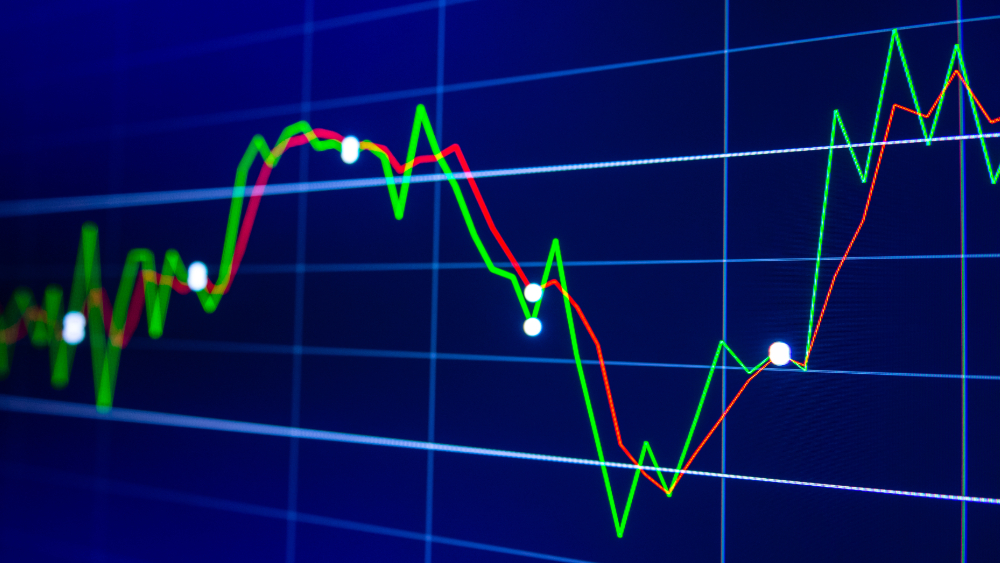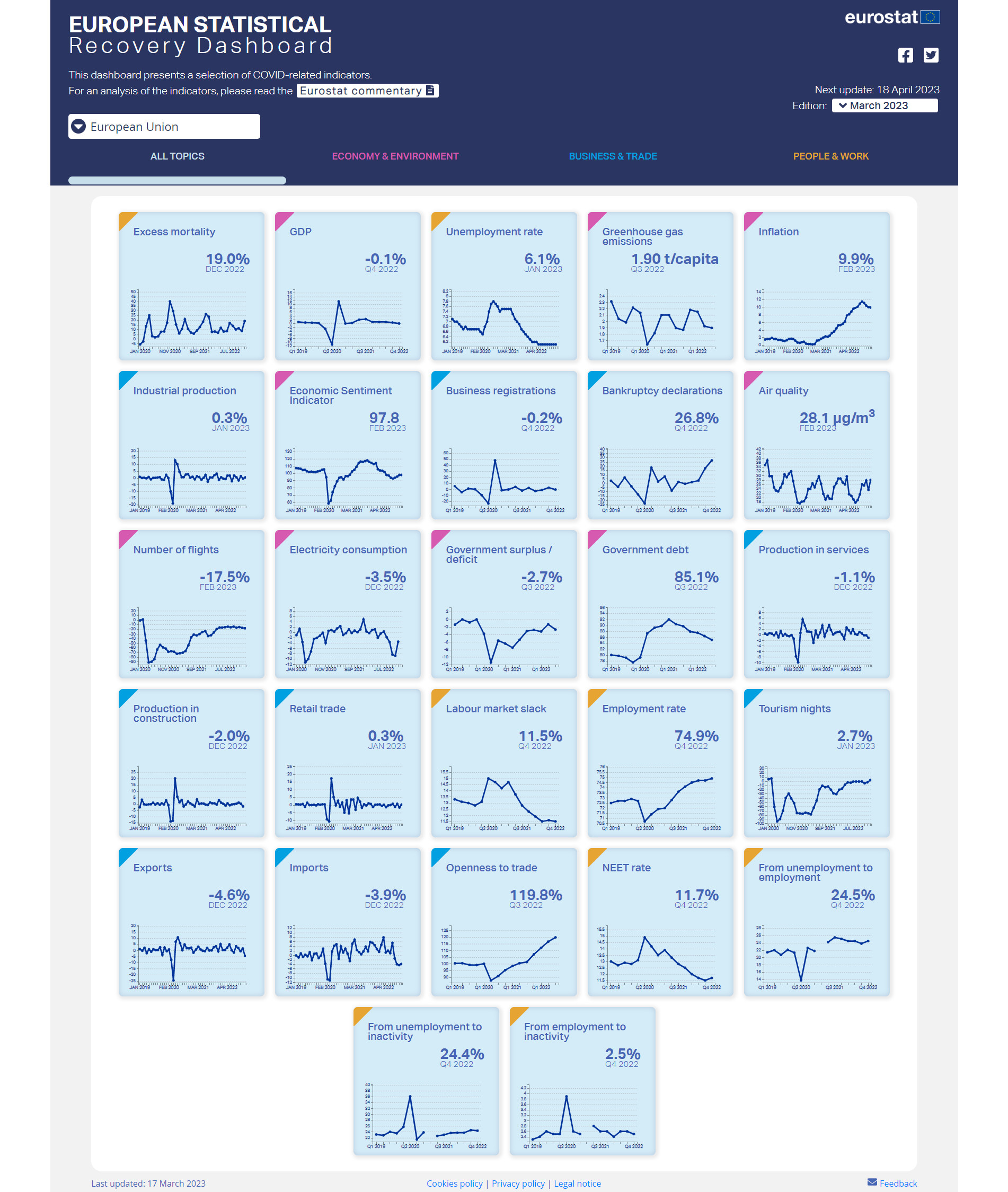European Statistical Recovery Dashboard: March edition

Today, Eurostat released the March edition of the interactive European Statistical Recovery Dashboard.
The dashboard contains monthly and quarterly indicators from a number of statistical areas relevant to tracking the economic and social recovery from the COVID-19 pandemic, across countries and time.
March highlights: EU inflation rate continues to decrease but at a slower pace, while industrial production rebounds, after GDP contracts slightly
The EU inflation rate continued to decrease but at a slower pace in February. In the same month, EU economic sentiment was stable, remaining well below its pre-pandemic level. The stable Economic Sentiment Indicator was the result of lower confidence in industry and services, offset by increasing confidence in retail trade and among consumers, while sentiment in construction remained stable.
EU industrial production and retail trade rebounded, and unemployment remained stable, in January 2023, after GDP contracted slightly in Q4 2022 due to exceptional adverse shocks. In December 2022, EU production in services dropped for the third time in a row. GDP, industrial production, production in services and retail trade remained above their pre-pandemic levels, while the unemployment rate was below. The tourist accommodation sector recovered above its pre-pandemic level in January 2023.
As a result of high energy prices and EU coordinated actions to curb electricity consumption, European electricity use fell significantly in November and moderately in December 2022.
You can read the full analysis by clicking “Eurostat commentary” on the dashboard’s header. The dashboard is updated every month with the latest available data for each indicator.
The line charts in the dashboard offer many functionalities to easily explore and analyse the development of the indicators, such as displaying a longer time series, comparing several countries, downloading the customised chart or the source dataset.
For more information
- Statistics Explained article on Eurostatistics - data for short-term economic analysis
- Thematic overview on COVID-19
If you have any queries, please visit our contact us page.

